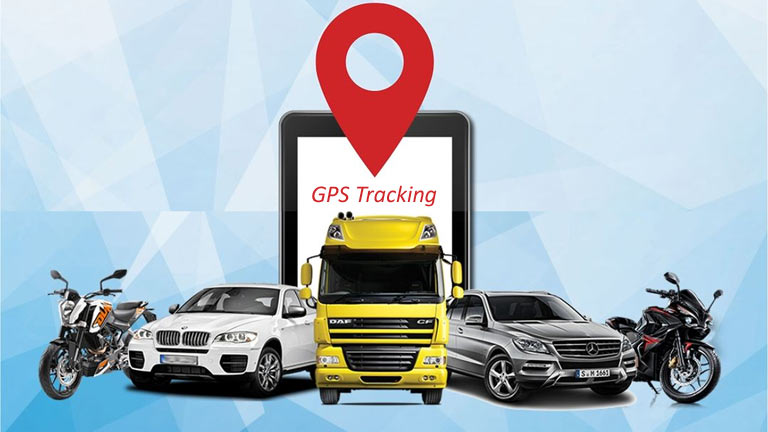
Asset tracking solutions help businesses boost asset utilization resulting in more profit. They are also often used to prevent theft of high-value assets and provide documented data to law enforcement in the event of theft.
A small GPS device is typically attached to your asset and connected to a telematics gateway. The device is then able to push data at regular intervals to your asset tracking system.
Reduce Lost Assets
GPS tracking allows you to monitor equipment, tools, and vehicles from a centralized dashboard. This visibility helps reduce costs by preventing theft, saving on fuel expenditures, boosting operational efficiency, and eliminating waste.
One of the main issues businesses face with their expensive assets is losing them. When a company loses its vehicles, tools, or equipment, it can cause significant delays and cost a lot of money in lost productivity. This is especially true for companies that operate with high-valued assets like construction equipment or vehicles. With a GPS tracker fitted to your equipment, if it is stolen, you can recover the asset quickly thanks to the GPS trail it leaves behind.
A GPS tracker can also help prevent theft by allowing managers to set geofences. These geographical boundaries can block the movement of assets, helping to keep them secure. This can help deter thieves as well as employees that may be moonlighting and using equipment and tools for personal reasons.
Finally, GPS can also save time by reducing the amount of time wasted searching for equipment. Instead of spending countless hours looking for an item that isn’t where it should be, workers can spend more time on tasks and improve overall productivity.
Another benefit of GPS is that it can alert you to maintenance issues before they become larger problems. For example, if a vehicle is showing signs of excessive wear and tear, it can alert you to the issue so that repairs can be made in a timely manner. This can help you save on expensive repair costs and avoid costly downtime. In the long run, this can increase your return on your investment in your assets and improve your business’s efficiency and profitability.
Prevent Theft
One of the most difficult aspects of fleet management involves preventing theft. Equipment and vehicles are often stolen for parts or to make a quick buck. Fortunately, GPS tracking can prevent the theft of assets by providing a centralized view of all equipment. With this, managers can monitor their fleet of vehicles and ensure that all equipment is in place when needed. They can also implement alerts and software access that are triggered when certain activities occur, like when a vehicle or piece of equipment moves without authorization.
Additionally, businesses can use GPS tracking to optimize routes and reduce idle time. This helps companies cut labor costs and save money on fuel while improving efficiency and safety. The software can also help eliminate timesheet fraud by proving that employees are working when they say they are.
Another benefit of GPS tracking is that it can help minimize maintenance costs. A GPS system can help companies determine if the equipment is at a particular job site or office location, which can help with scheduling and planning. It can also help with inventory control by reducing the amount of lost or stolen equipment.
In addition to preventive measures, GPS tracking can be used for recovery after the equipment is stolen. By combining real-time tracking with an industry-specific solution such as Samsara, business owners can get instant alerts if a vehicle or piece of equipment is operating outside its designated location or during hours of operation. They can then work with law enforcement to recover the equipment quickly, reducing expensive replacement and insurance costs. If an accident occurs, GPS can even provide video evidence that can help in the case of an insurance claim.
Increase Efficiency
GPS tracking systems allow managers to gain insight into how assets are used. This can help improve productivity and overall efficiency within a business, which will ultimately save time and money. For example, by tracking work vehicles, managers can see if they are being driven inefficiently or if the vehicle is sitting idle for an extended period of time. By identifying these inefficiencies, businesses can reduce labor costs by increasing the amount of time that assets are utilized, thus reducing downtime and saving on maintenance fees.
For example, a trucking company that uses a GPS tracking system can identify driving habits such as harsh acceleration or speeding. This allows them to incentivize good driving behaviors among their drivers, ultimately increasing fuel efficiency and lowering transportation costs. Additionally, the ability to track driver speeding can also reduce insurance rates by allowing companies to show insurance providers that they take safety seriously and that their drivers are trained well.
This type of tracking technology can also be useful for other types of asset management, such as construction, manufacturing, agriculture, and logistics — all of which use equipment that is difficult to locate. By tracking the location of these assets, managers can quickly find them if they need to perform maintenance or service. Additionally, many of these systems feature a visual map that can be used to identify the exact location of an asset. These tools can be especially useful for large businesses that manage hundreds of pieces of machinery over a broad geographic area. Some systems even have geofences, which are used to notify the owner when an asset is outside of a designated geographic zone.
Minimize Maintenance Costs
GPS technology can help businesses save time and money by avoiding unnecessary expenses when tracking equipment, vehicles, or workers. For example, with a GPS tracking system, business owners can monitor whether assets are being used at all or idle for too long. This allows them to schedule maintenance when it is needed to avoid expensive downtime and repairs.
Similarly, GPS trackers can help companies improve asset utilization by identifying areas for improvement. For example, a business that uses GPS to track drivers can identify harsh acceleration and other driving behaviors that could unnecessarily use up fuel and contribute to excessive wear and tear on the vehicle. This could lead to a significant reduction in operating costs while also improving fleet safety.
For companies that rely on high-value assets, such as construction firms that need to service hundreds of pieces of equipment spread across large geographic areas, a GPS tracker can help them locate their tools and equipment quickly. This can prevent theft and help minimize downtime due to equipment failure or the need to travel to find an item.
In addition, a GPS tracker can help a company streamline paperwork by digitizing essential workflows like proof of delivery and custom forms. This can free up valuable team members’ time to focus on more productive work. It also means that businesses can enjoy accurate and precise billing thanks to real-time data on the actual usage of each asset. This is especially helpful for businesses that rely on rental equipment for their operations, as they can easily prove when an item has been returned or not. This helps them reduce overpayments and ensure their customers receive the value they’re paying for.
Save Time
With GPS tracking, asset managers are able to monitor the location of every one of their assets. This allows them to be more efficient with their time. Employees who don’t have to spend hours searching for lost equipment can save time and money. This also means that fewer overtime hours have to be paid.
In the case of expensive assets, GPS tracking gives businesses peace of mind that they are safe from theft. It is important to note that this isn’t a replacement for proper security measures. This is simply a layer of protection that can help prevent rogue employees from taking advantage of company resources.
The GPS device is a small electronic unit that can be either self-powered or connected to an asset via a mobile data network. Once it is turned on, it will begin transmitting data at regular intervals to a central server. This information is then stored for future analysis. The data can be viewed on a computer or mobile phone at any time and includes things like the current position of the asset, speed, distance, and direction.
This type of GPS tracking is more accurate and dynamic than the traditional barcode system. This is because it will show the actual usage of an asset rather than just an estimate based on the number of hours the machine has been switched on for. In the case of expensive equipment, this can make a big difference to the overall efficiency of an organization.
This technology is particularly useful for construction companies that need to find a piece of machinery quickly when they are working on a job site. It can also be used to improve the utilization of equipment by uncovering underused tools or those being incorrectly located. This could allow a business to reduce the amount of equipment it rents and therefore save money on unnecessary expenditures.




